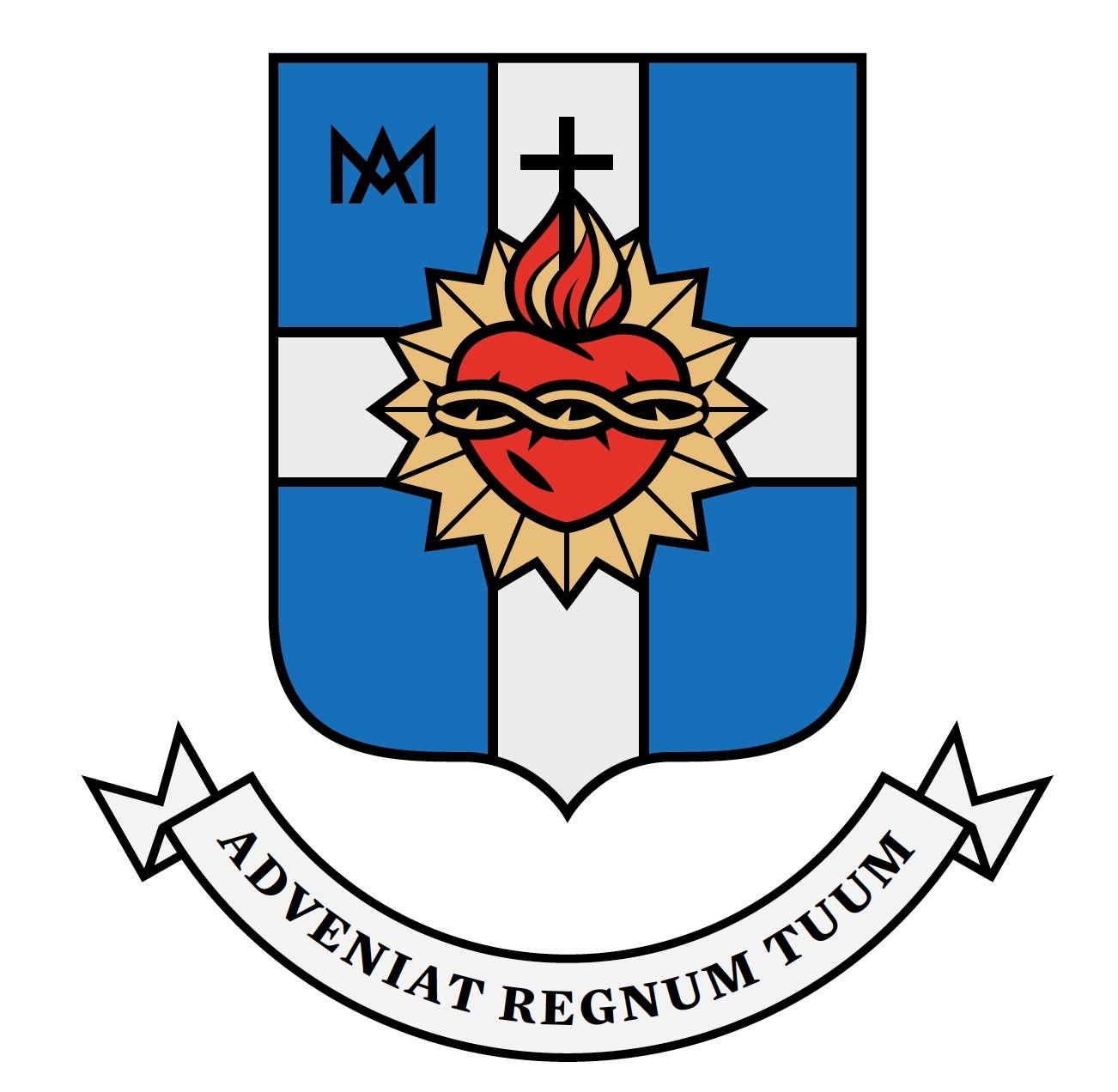The trip from Chennai India to Buenos Aires Argentina took about 40 hours door to door. It included an 8-hour layover in London two breakfasts on each leg, and seven movies. I slept a little, but was extremely glad for a long siesta when we arrived. I have never visited South America before and am very excited.
Fr. Leonardo, the Argentinian provincial met us at the airport. On the way home to the community house he pulled up to a typical two-story neighborhood house and had us get out for a closer look. It was the house where Jorge Bergolio, now Pope Francis, grew up.
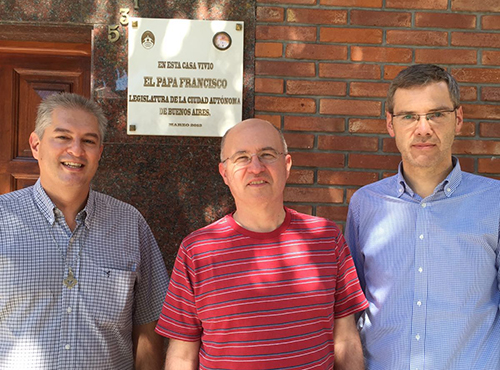
Our SCJs in leadership had regular dealings with him when he was the head of the Jesuit college, and the Archbishop of Buenos Aires.
One of my areas of responsibility is our Spanish speaking South American provinces. My initial visit will help me begin to familiarize myself with the region, and meet our community members with whom I can collaborate on future projects. I studied Spanish when I worked in Texas almost 20 years ago, but did not use it much during my years in South Dakota and have forgotten more than I remember. After studying Italian these past months, I am never sure of which language will come out when I try to communicate. I mix and match three languages in a way that makes no sense to anyone but me! I have a lot to learn.

We have traveled by many modes of transportation and the trip from Buenos Aires to Montevideo Uruguay was on a boat christened “Francisco”, in honor of our Pope. We parked our car in the belly of the ferry and enjoyed comfortable movie theater seats on board economy class. The large boat also featured a duty free shop where many travelers shopped. My suitcase is already full so I have not been adding souvenirs. The journey across the Rio de La Plata takes a full three hours, but cuts the driving time by more than half.
We have only a half dozen SCJs in Uruguay, missionaries all originally from Italy. Some of our elders have spent up to half a century serving the church in South America. While few in number the Dehonians have made a significant impact. Besides the pastoral work, we have a history of publishing theological books, and Umbrales, is a respected national periodical.
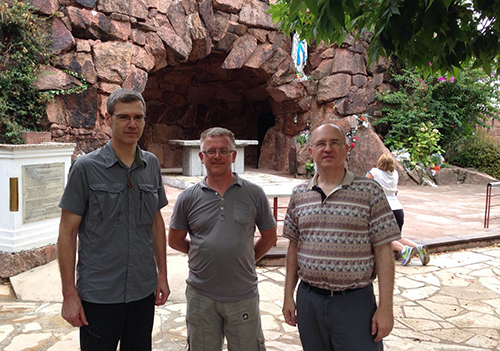
The SCJs serve in the Gruta de Lourdes, a well-known national shrine in Montevideo. Many pilgrims visit each day, and a few joined us for the mass which they noticed we were celebrating. On Lourdes’ feast day, with special prayers and devotions, up to 30,000 visitors make pilgrimage to the site. Racks of candles burn in the open air, symbols of people’s hopes and prayers. A well on the grounds provides water for devotional use. We were told how besides leaving devotional candles, some people now bring clothing and food as an offering for the poor. La Gruta is at the edge of one of the poorer barrios of the city.
Our neighboring mission, Our Lady of Guadalupe, is in the midst of one of the toughest areas of the city, notorious for narco-trafficing. The Barrio has many small cinder block houses. Three jails that no one else wants in their neighborhood are located within a few blocks of the church. In an effort to address the problems of the area, the city located a new police station and fire department nearby, and finally put in a nice playground. Security guards from one of the detention centers patrolled the area the morning we walked through.
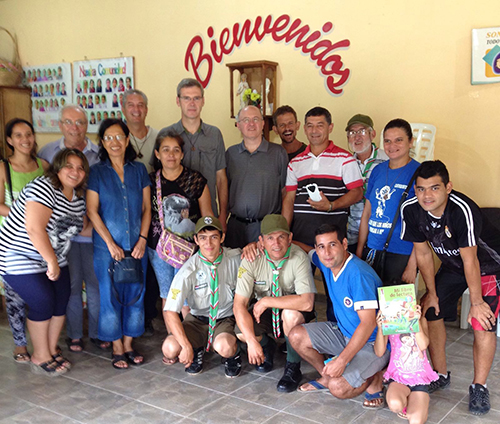
We also have two schools that serve the educational needs of the Barrio. The challenges of running schools in poor neighborhoods are many, as we try to give young people tools they will need in the future. Money is a constant worry because what the students are able to contribute to their education only meets a fraction of the real costs of running a school.
Young people constantly hang around Our Lady of Guadalupe church. Perhaps it is a safe haven in an otherwise tough neighborhood. But we also discovered that most bring the lap tops that the government supplies to every student, and tap into the parish Wi-Fi to connect with friends and the wider world. While we made some small talk I wondered what kind of future awaits them. One teen mom nurtured her 2 month old baby on the church steps. A heavily tattooed young man had a half dozen deep scars from knife slashes across his arms. I always hope and pray Dehonians can make a positive difference in peoples’ lives, especially for those what have the odds stacked against them.
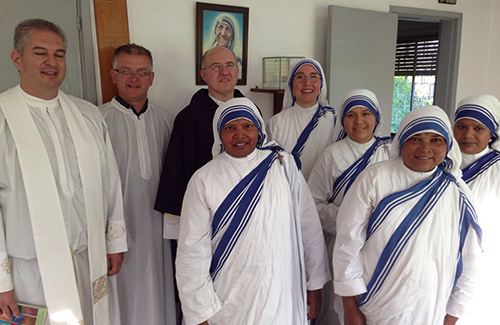
Mother Theresa’s Missionaries of Charity have a presence in the neighborhood. The priests offered my services to say mass in English one morning. Thinking that I was the Superior General from Germany, mother superior afterwards complemented me for how well I speak English! We had a laugh then shared tea and breakfast.
El Pinar is a half hour east of the Capital, close to the coast, and many people have nice summer/weekend homes where they spend their time away from the city. One doesn’t have to go far from the beach to find much poorer houses that are permanent homes for many. Close to the parish church pine trees fill the air with a fresh scent. The fine white sandy beach stretches for miles, and hosts swimmers, wind surfers and sun bathers. The sloping sand dunes reminded me of the Indiana shores of Lake Michigan, near where I grew up. When Fr. Heiner wrote our Administration’s programmatic letter he spoke of following in the footprints of Jesus. In the sand I could clearly see the footsteps of our Superior General as he led the wandering along the beach.
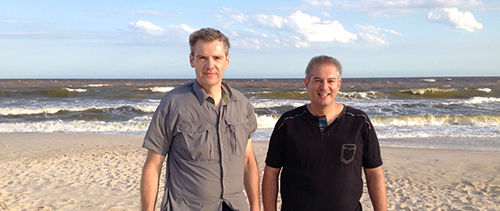
When we celebrated mass in El Pinar, the assembly was a nice mix of children and adults. Our two elder priests stationed there no longer drive, but with parishioners’ help are still able to care for the pastoral needs of the area. People appreciate the access to the sacraments and have active bible study and prayer groups. In the evening the seven families who work together to take care of the maintenance needs of the parish treated us to a cook out. The cooks stacked wood on top of an oil drum cut in half, and piled on mouth watering meats and sausages, carne asada style. Our table was a sheet of plywood set atop two sawhorses. Families added locally grown fruits and vegetables. Everything was bite size, passed around and shared communally. It was so tempting to take just one more bite, that I ate way more than usual.
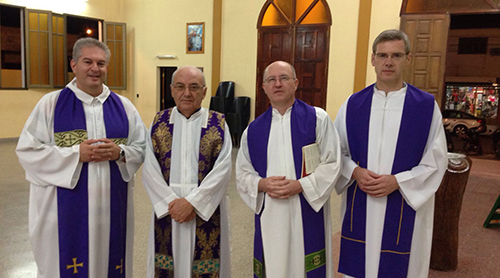
Driving home along the coast we passed through the wealthier side of Montevideo. High rises line the shore, with a beautiful and well used park between the road and the water. It felt like Lake Shore Drive in Chicago. All societies have wealth gaps. It just seems more pronounced here. Our conversation wandered to the narcotics trade, recounting how many of the wealthy spend their money on recreational drugs for parties, and the poor neighborhoods pay a bigger price with violence and so many people in jail.
Over the course of four days we spent time listening to each confrere, learning of their history, how they are doing, and their suggestions for the future of the district. We have not been able to get vocations from the area, so after many years it is still dependent on missionaries from entities.
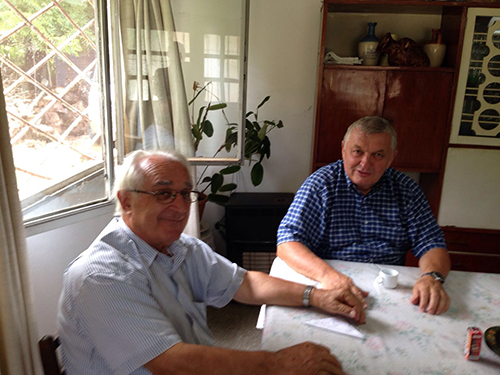
We learned that Uruguay is one of the most highly secularized countries in Latin America, and many factors work against religion. Four of the men are in their late 70s, some with growing health issues, which necessitates both long and short term planning. But our visit gave me a great appreciation for the day to day work that goes on to touch the lives of people with God’s word of love.

